Article written by David P.
Where there is no vision, the people cast off restraint; but he that keeps the law, happy is he. Proverbs 29:18 (ASV)
Having a vision is vital. Without one, as King Solomon wrote long ago, confusion reigns.
A vision — an aspirational idea, concept, or statement — clarifies one’s mission. It channels one’s energy. A vision can be as simple as a child declaring, “When I grow up, I’m gonna be a fireman,” as complex as General Motors’ Zero Crashes, Zero Emissions, Zero Congestion, or as profound as that 1776 Declaration from the pen of Mr. Jefferson.
Two cars — fraternal twins born in the 1950s — offered compelling visions to a growing post-World War II suburban middle-class increasingly seeking automobiles, not just for their utility, but as personal expressions. One vision was achieved; the other, prematurely abandoned. First up, Chevrolet’s Corvette.
The vision: fast, two-seat sports car. And since 1955, when Chevy began offering a V8 in place of its anemic Blue Flame Six, eight generations of Corvettes have been just that.
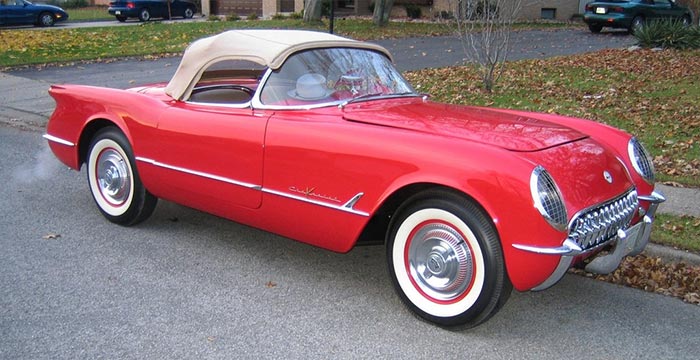
Despite culture shifting, technology progressing, markets evolving, competition increasing, laws changing, wars happening, employees coming and going, in other words, despite life happening, Chevy has persisted in understanding, in refining, in perfecting this same vision. And the benefits?
For decades now, Corvette has required no plaid-jacketed huckster to hype itself, no costly ad campaign to explain itself, no emergency mid-generation makeover to revive itself. Across all nations, tribes, peoples, and languages, wherever car lovers live, Corvette means one thing: fast, two-seat sports car.
America’s sports car also has quite the socioeconomic reach, directly providing upwards of a thousand good-paying jobs at its Kentucky assembly plant, with thousands more upstream and downstream of the factory, while indirectly supporting countless subsidiary efforts like a first-class museum and motorsports park, clubs, aftermarket businesses, print and digital media, etc.
All this good, friends, from achieving — and sustaining — a vision.
Now, consider Ford Motor Company’s Thunderbird.
Envisioned as a “personal car,” Thunderbird was the Blue Oval’s direct response to the Bow Tie’s two-seater. And what a response! That first-generation Little Bird outsold Corvette 5-1 over its three year run (’55-’57).
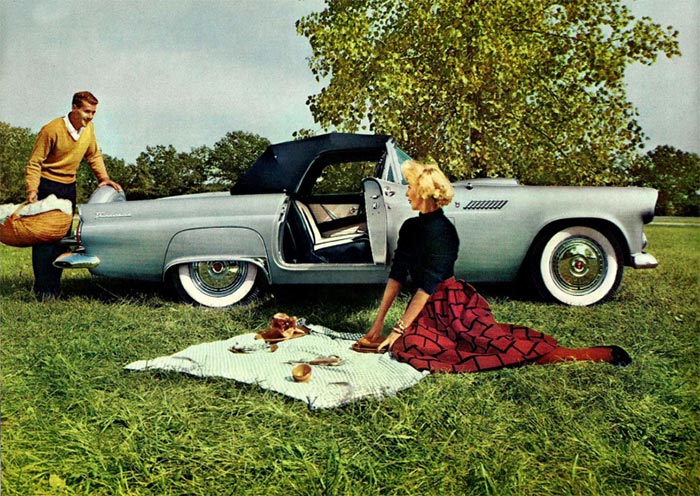
In 1958, however, Thunderbird’s vision changed. Sales for two-seaters would always be limited, and, as author Douglas Brinkley noted in his book Wheels for the World, Ford managers in the 50’s were “obsessed” with beating Chevy in yearly sales. Plus, then Ford General Manager Robert S. McNamara needed more high-volume product for a new Michigan assembly plant. So, Thunderbird’s second generation added a backseat and moved up to “personal-luxury.”
Sales rose dramatically, with the so-called Square Bird winning Motor Trend’s “Car of the Year” award. Decision validated, right?
Freed from its original vision, however, subsequent generations of T-bird’s drifted. Two doors became four became two again. Room for four became room for five, then six, before twin oil shocks put Ford’s Big Bird on a diet.
In 1997, after 42 years and ten generations, after growing from personal car to personal-luxury to full-size luxury, Thunderbird ended production primarily as a nice, mid-size rental.
In 2002, Ford introduced a two-seat modern interpretation of that first-generation Thunderbird, again winning Motor Trend’s “Car of the Year” award.
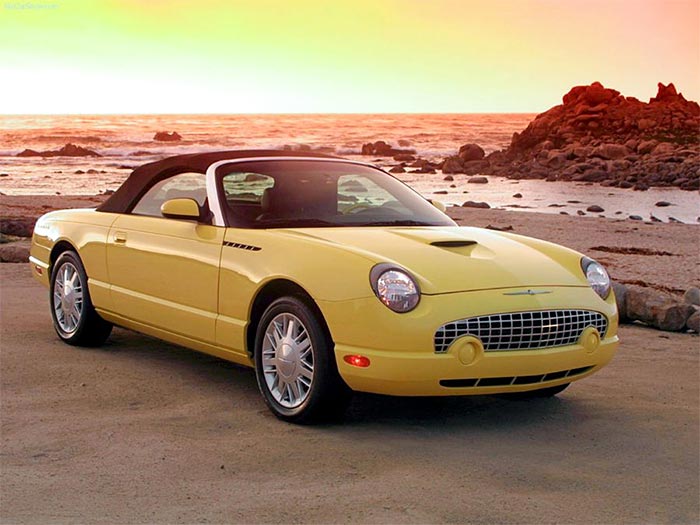
However, niche markets don’t suffer absences well. After a strong first year, sales dropped, the Retro-Bird was canceled, and Wixom Assembly, that Michigan factory mentioned above where Thunderbirds were built, closed, its site now mostly occupied by a home-improvement big box and an RV dealership.
Two cars. Two visions. Only one stayed the course.
Which begs the question, “Why didn’t Corvette’s vision drift as well?” After all, GM seemed to be exploring different options for a new segment nobody quite understood yet.
At New York’s 1954 Motorama, GM showed two concept cars, a Chevy Nomad station wagon, and a Chevy Corvair fastback coupe. Essentially, both cars had Corvette’s front and rear ends bolted on. Both looked great!
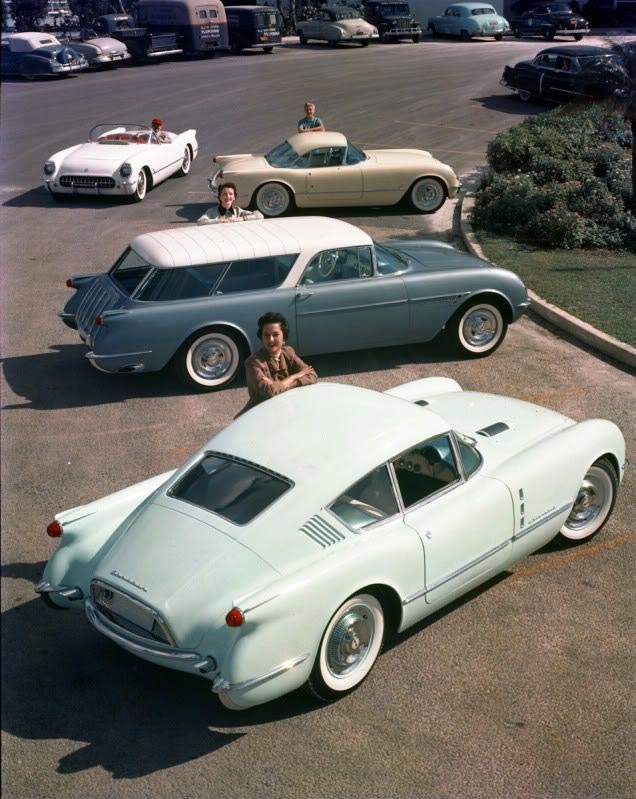
Two other two-seat dream cars — a Pontiac Bonneville Special and an Oldsmobile F-88 — also debuted at that Motorama, both built on a Corvette chassis. What settled the matter?
The easy answer is GM/Chevy had leaders who were passionate about sports cars, designers, and engineers who patiently shepherded their future legend until it was safely planted in the marketplace.
But, without in any way diminishing the significant contribution of Corvette founders like Mr. Earl, Mr. Cole, or Mr. Duntov, what General Motors had in the ‘50s — and Ford Motor didn’t — was what the second part of that proverb above calls “law,” rules for living or doing.
Law’s hand-in-glove relationship to a vision is best seen at our nation’s infancy when America’s vision of 1776 — equality, unalienable rights, and consent of the governed, things Mr. Lincoln once characterized as “applicable to all times in all places” — was only secured by 1787’s “supreme Law of the Land,” our United States Constitution. Constitutional law was the how to the Declaration’s what.
With GM, its longtime Chairman and CEO Alfred P. Sloan, Jr. had championed 1.) a stratified product policy rationalizing Chevy-to-Cadillac’s lineup and 2.) a federated organizational structure, or what Mr. Sloan described as “decentralization with co-ordinated control.” Combined, GM’s coherent product policy and commensurate organizational structure effectively governed how the automaker would execute its vision of “A Car For Every Purse And Purpose.” And execute it did!
By the time Corvette arrived, General Motors was the largest, most profitable company in America, dominant enough that Mr. Eisenhower’s Justice Department had begun exploring possible antitrust charges.
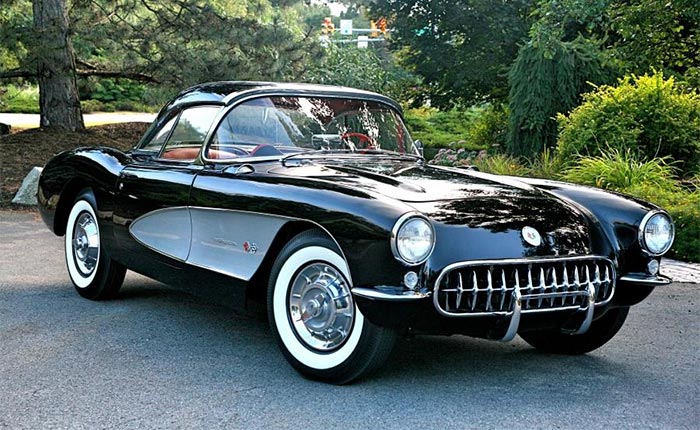
So again, why didn’t Corvette’s vision drift? Because per Mr. Sloan’s guidelines, known facts had been gathered, a coordinated discussion between divisions and corporate staff had occurred, a decision agreed on, and Chevy alone was given autonomy to carry out this vision: a fast, two-seat sports car. Those 1954 Motorama cars were simply what all show cars are: design or engineering exercises meant to generate excitement or gauge public reaction.
Meanwhile, Ford in the 1950s was still transitioning from Henry Ford’s autocratic rule to grandson Henry Ford II’s more collaborative management style. A vision easily gets lost during such transitions. Sadly, Thunderbird’s was.
Two cars. Two visions. One was governed by rules. And only one lives.
Friends, on our nation’s 245th birthday, the lesson these two cars offer remains relevant. To wit: a vision without rules governing its attainment invites confusion, and ultimately, failure. Yes, let’s celebrate July 4th. But let’s also soberly acknowledge that our precious, blood-bought independence has been — and always will be — contingent on a citizenry submitted to the rule of law.
Corvette.
Source:
David P. is a long time Corvette enthusiast and an employee of General Motors. The words are his alone and were not authorized or promoted by General Motors.
Photo 212433893 © Oleg Kovalenko | Dreamstime.com
Photo 92688798 / Corvette © Robert Diepenbrock | Dreamstime.com
-

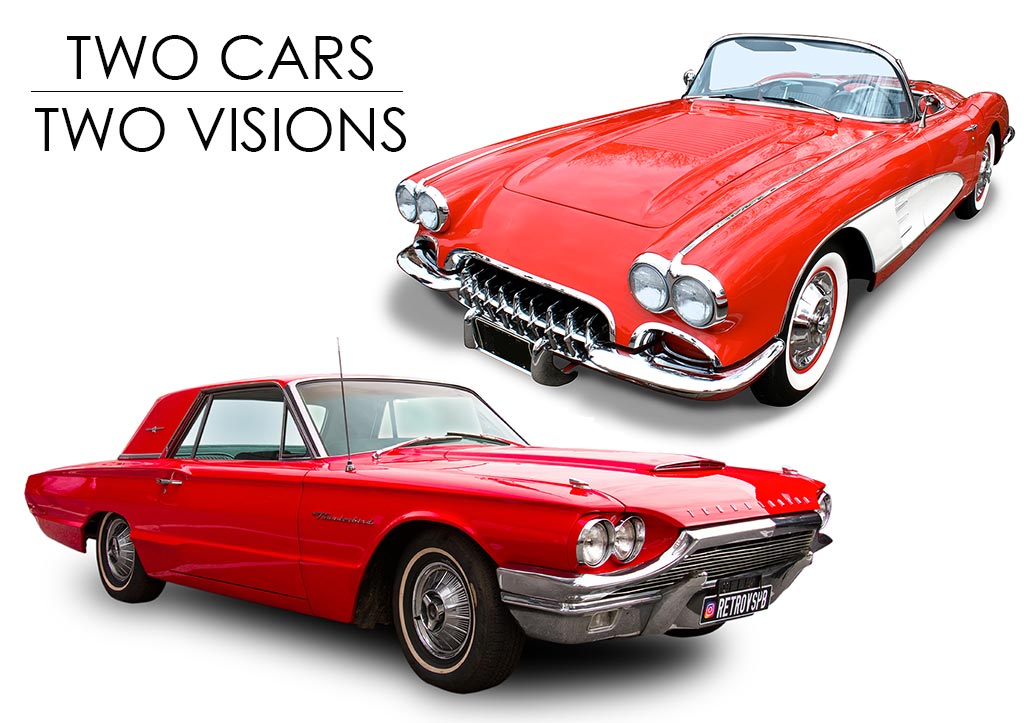



Excellent article, David P.! When I look at Ford & Chevy when it comes to the Thunderbird and Corvette, respectively, a few additional points come to mind: 1) “Identity,” and the, “Identity Crisis;” 2) The use of fiberglass in the origin of the car, as opposed to Ford’s selection of steel, the building material of the time; 3) A second comparison repeated history, but in a different way: The Ford GT a true performance car with some Tour De France history versus and American icon, the Corvette, a true American sports car for Americans (and certain world view collectors). The GT became a great car that in general, Americans could not afford as Ford pursued beating Ferrari and then building a limited edition car that few Americans could afford. Corvette provided space in a lot of its models for luggage or golf clubs and when time finally came to build a top of the line sports car, still for Americans, Corvette did a long development with its now famous decision to go mid-engine V8. The result was a Tour de Force which came in at under $60,000.00. There’s a lot more to this story and yet these are some of the essences.
The early T-birds at least had fiberglass removable hard tops, before they went to the (ill-advised) back-seat design.
Yes, the T-Bird failed but Ford then created the ultimate personal car: Mustang which has stayed true to its original idea for nearly half a century. Corvette, OTOH, has abandoned the front engine, manual transmission affordable sports car that Zora created with the C3 that sold a record 54K in 1979 with a model run of 15 years. With a base price of $10,220 ($38,440 today), the 1979 Corvette was very affordable.
Both are iconic automobiles! Unfortunately Ford never gave the T-Bird a true identity. It went through too many transformations and ended up becoming irrelevant. Those baby birds still look sensational even to this day!
Comments are closed.